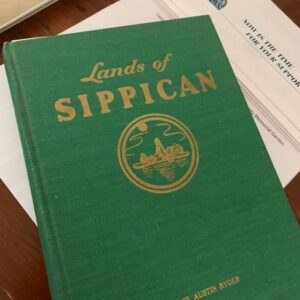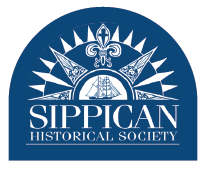This Black History Month, let’s examine the 1800 Federal United States Census when Marion and Mattapoisett were still part of Rochester. Each census record lists the head of household by name, the number of people living with them and their sex, age bracket, and “color.”
Rochester’s total population of 2546 (excluding “Indians” – a story for another day) included:
- 2522 “Free White People” and
- 24 “All Other Free Persons.”
Only white men, and a few white women had their names recorded as the heads of households in Rochester. Most women, all children, criminals, servants, laborers, and many others were counted, but not named.

Lines from the 1800 U.S. Census
Across the nation, census totals may be the only official record of the scale of local black communities.
From 1641 to 1783, slavery was legally sanctioned in Massachusetts. Enslaved people were considered both property and “persons before the law” with the right to sue for their freedom. The few that went to court were mixed, but a series of cases in the early 1780s caused the State Supreme Court to abolish slavery in 1873 as incompatible with the Massachusetts Constitution ratified 3 years earlier. Although Rochester’s black community was technically free, they were most likely indentured servants or apprentices contractually bound to white families. Some contracts with personal information might exist in old Plymouth County records; unfortunately, none are found in the SHS archives.
Who were these 24 “All Other Free Persons” in Rochester?
We do have one resource at SHS that provides a few names – Lands of Sippican. Author Alice Austin Ryder, writing in the 1930s, admits that the
“servants of in Old Rochester are long since dead. Many years since any family in the villages had owned a black servant. Many denied that any such had lived in Rochester.” In fact, the census records for 1860, 1870, and 1880 list no “black” or “mulatto” residents in Marion. To counter the notion, Ryder lists 22 names (or at least nicknames) of those “who sat in the gallery ‘pues’ in the old meeting houses”: Cambridge, Barbary, Caesar, Cornelius, Peter Hix, Sylvia, Sarah Scippio, Cuff, Cate, Will, Cyrus, Judah, Troy, Deborah, Lot, Toby, Peggy, Thomas, Jack, Sarah, Violetta, and William. “[D]on’t deny these their place in the life of old Rochester-Towne. Their Names are written in the Records!”
What were their lives like?
 If you’re curious to learn more about them, please consider volunteering your time to dig deeper into historical records and see what can be found.
If you’re curious to learn more about them, please consider volunteering your time to dig deeper into historical records and see what can be found.
Adriana Maksy wrote this blog post, referring to:
Year: 1800; Census Place: Rochester, Plymouth, Massachusetts; Series: M32; Roll: 16; Page: 108; Image: 119; Family History Library Film: 205617. Available from Ancestry.com. Ancestry.com Operations Inc, Provo, UT. 2010. Images reproduced by FamilySearch.
Commonwealth of Massachusetts. Massachusetts Constitution and the Abolishment of Slavery. Mass.gov, retrieved February 8, 2024
Ryder, Alice Austin. Lands of Sippican on Buzzards Bay. Sippican Historical Society. Marion, MA. 1975. p. 210

